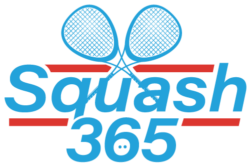Squash and tennis are undoubtedly the two most popular and recognized racket sports in the world.
Yes, there are other popular racket sports such as Badminton, racketball, pickleball table tennis, and recently padel has become increasingly popular, but without a doubt, squash and tennis are the two most recognizable.
So in this article, we thought it’d be a good idea to have a look at both squash vs tennis, not in terms of a direct comparison, but more of an overview of some of the similarities, differences, and benefits of playing both sports.
The History of Squash And Tennis
Tennis
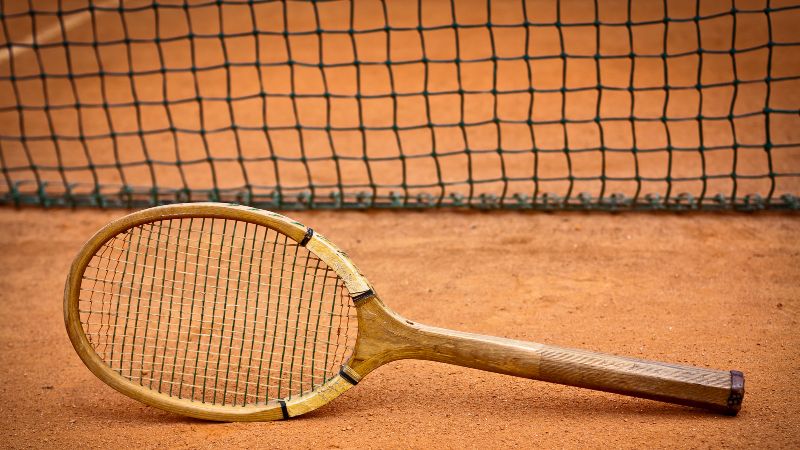
By some reports, the game of tennis can be dated as far back as the 12th century, with evidence of the game being played in ancient Greece. Many people believe squash is based on the original tennis game style; however, there is limited evidence to support this theory.
In 12th century France, a popular sport was being played that was very similar to what we would call modern-day handball; the French called the game “Tenez,” which in simple terms means to “play.” It’s believed before starting each match the competitors would shout “tenez.”
Some fascinating history on tennis is that back in 1530, English King, Henry VIII, built what is believed to be the 1st tennis court at his Hampton Palace. However, it wasn’t until nearly 50 years later that the 1st tennis racket was created.
Tennis evolved over the years and took several different twists and turns in terms of rules and equipment. In 1873 Major Walter Wingfield invented what we know call modern-day tennis. For the 1st time, tennis could now be played outside, and the surface of choice was lawn; this is where we get the name “Lawn Tennis.”
Squash
The sport of squash has a much shorter history and back story and dates back to the 1830s. The game of squash was believed to have been invented at the Harrow School-based not far from London.
The story goes that the game came about after some students at the school accidentally punctured one of the racketball balls. They discovered that rallies seemed to go longer by playing with the deflated ball, so the game was much more enjoyable; the slower ball also made the game accessible to others who were just starting out.
Courts: Squash vs Tennis
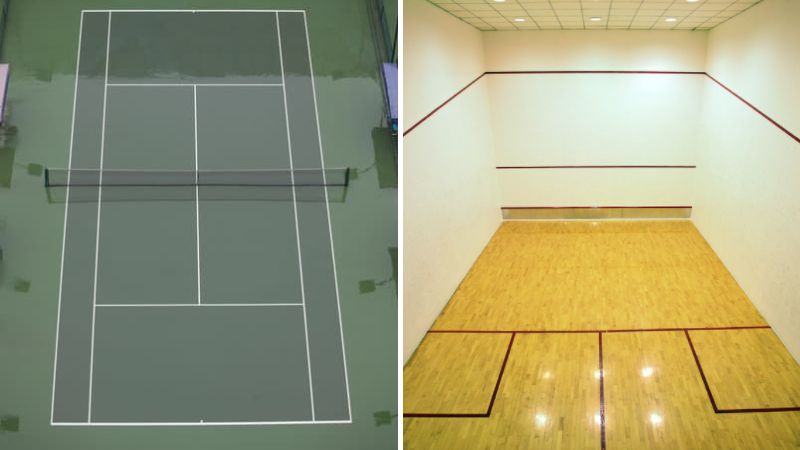
You would have to live under a rock not to know that squash is played inside the surrounding walls while tennis is primarily played outside on a wide-open court.
The court that tennis and squash are played on is probably the most significant difference between both sports. But the differences end there – they couldn’t be any more different if they tried.
Tennis Court
The size and dimensions of the tennis court actually differ depending on whether you’re playing singles or doubles:
Singles Sized Court: 78ft x 27ft
Doubles Sized Court: 78ft x 36ft
The court also has a net that is placed precisely in the middle of the court, with the net measuring 3.5ft in height. You’ll also find service lines that are 21ft from the net also. The court surface varies significantly, with the most popular being hardcourts, clay, and grass.
Squash Court
As mentioned earlier, squash is played inside on an enclosed court with fours walls, a floor, and a ceiling.
Now when you compare the size of a squash court to a tennis court, you’ll see it much smaller in size:
Squash Court: 32ft x 21ft x 18.5ft
The court’s surface is almost typically made from wood; however, in recent years, a highly durable rubber composite has been developed and is now seen in many squash clubs worldwide. The rubber composite has the added benefit of being softer on the joints and, as such helpful in preventing or mitigating injury.
So put quite simply, in tennis, the aim is to hit the ball over the net, whereas as with squash, the objective is to hit the ball off the four walls strategically.
You’ll also notice different lines on both courts, with the primary difference being the lines on a tennis court are “in play” throughout the entire point while the lines on a squash court are only relevant while serving.
Rackets: Squash vs Tennis
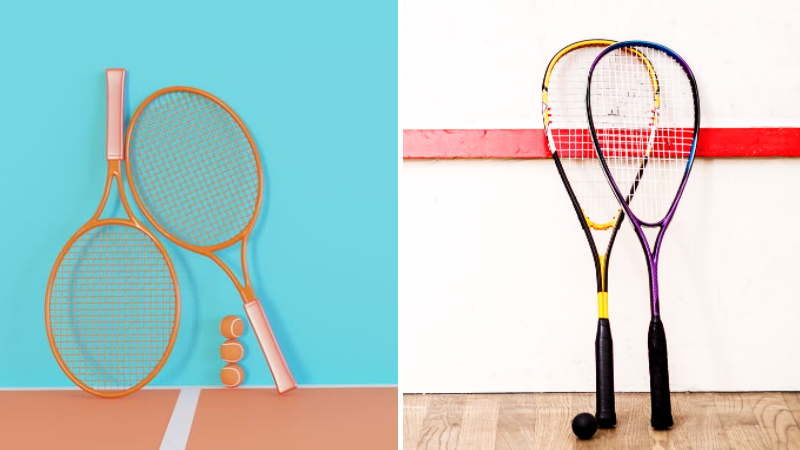
Those who have never seen or played squash or tennis could be forgiven for thinking the rackets are the same at first glance, but those who play squash and tennis know that’s not the case.
While similar in shape, both rackets are actually entirely different from one another in several ways.
Let’s start with the similarities; both rackets have an oval or elongated head, and although they are not identical, they are similar. If you were to get specific, you might say the shape of the squash racket is a little more “tear-dropped,” while the tennis racket has a slightly rounder head.
If you think about the size of a squash court, then it’s only natural that the squash racket is smaller than its tennis counterpart. The rackets also differ in length. A squash racket measures 27inches while a tennis racket measures 29 inches; it’s important to note that these are the maximum lengths, and the rackets may be smaller than this.
In terms of the size of the racket heads, the squash racket has a maximum hitting area of 500 square inches. On the other hand, a tennis racket varies significantly with head size, and as such, no tangible regulations are set in place.
Both tennis and squash rackets are made of the same materials, such as graphite, carbon, kevlar, and countless other combinations mentioned above. The weights of the rackets are also very different, with the average squash racket weighing roughly 4-6 ounces as opposed to the heavier tennis racket weighing in at between 8-11 ounces.
Balls: Squash vs Tennis
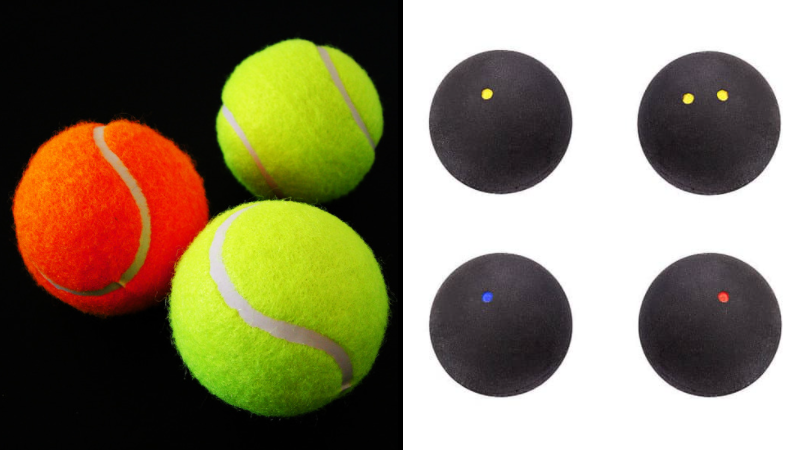
Again, the size of the court dictates the dimensions and weight of the equipment required to play both sports. One of the only similarities is that both balls are made from a highly durable rubber compound.
Squash Ball
There are a total of 6 varieties of squash balls which all vary drastically in the way they bounce and interact with the racket. Most of the squash balls weigh 0.8 ounces with a diameter of roughly 1.5 inches.
Tennis Ball
The tennis ball has changed over recent years, with several different sizes, weights, and colors being added to the game.
The ball is covered with yellow or green felt, depending on who you ask, and the size of its diameter is roughly 2.6 inches. The regular ball, the ball the pros use, weighs 2 ounces, with the other balls varying in weight.
The juniors also use three different types of balls, red, orange, and green, depending on age and level of play. These balls bounce differently compared to the regular ball and are bigger and softer to touch.
Squash vs Tennis Health Benefits
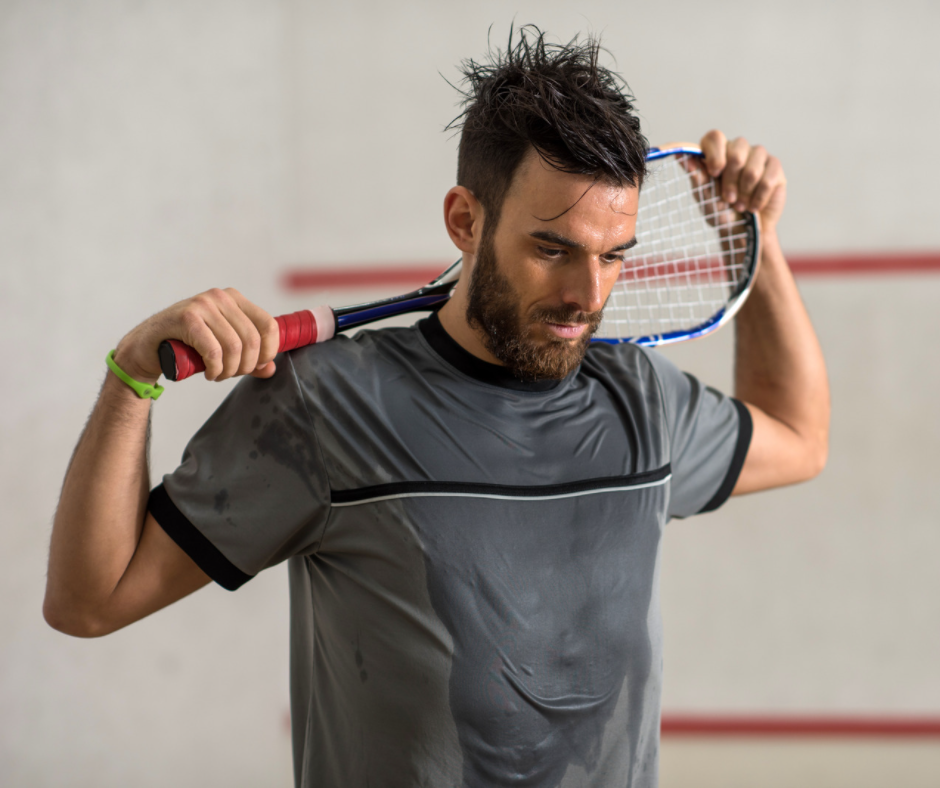
When it comes to both of these sports, they are generally recognized by most sports scientists to be two of the most physically demanding sports out there.
Both sports require an enormous amount of cardiovascular fitness and an array of different skill sets. Agility, flexibility, explosiveness, endurance, mental toughness, and more are all required to play squash and tennis. They are both excellent sports that improve one’s fitness levels while at the same time being both fun and social.
Fun Fact: Squash burns roughly 1000 calories per hour while tennis burns around 600; this is obviously dependent on several factors like weight, age, sex, and body type.
The social aspect of these sports is too often overlooked; Meeting new friends and challenging yourself in tournaments are all fun and social elements that make these two sports lifelong pursuits.
Conclusion: Squash vs Tennis
We are squash fanatics here at Squashpros, but we are also passionate about overall health, fitness, and wellbeing.
That being said, both squash and tennis offer numerous benefits in terms of fitness and, as just mentioned, socially. Meeting up with new friends, playing mid-week competitions, and challenging yourself with tournaments are all enjoyable and social aspects of both tennis and squash.
So get out there, and try your hands at both of the fantastic racket sports. You won’t be disappointed.
